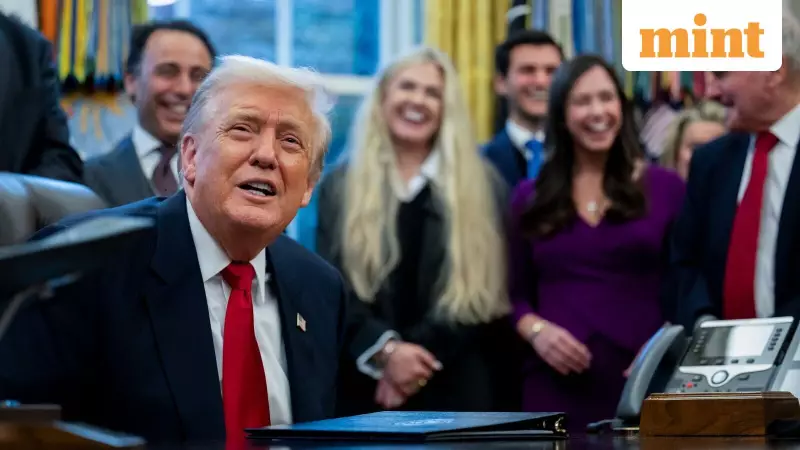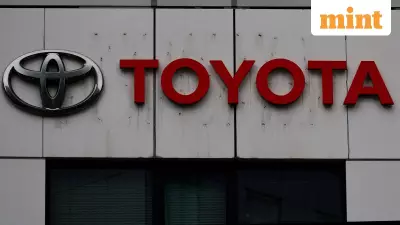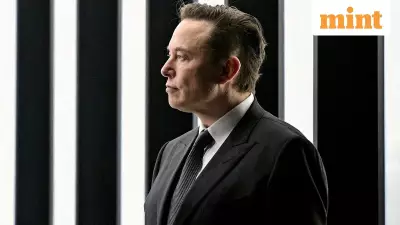
US-India Trade Relations Take Positive Turn with Tariff Reductions
In a significant development for international trade relations, US President Donald Trump has announced that tariffs on Indian goods will be lowered "very substantially," marking a potential easing of tensions between the two nations. The declaration comes as both countries approach the final stages of negotiating a comprehensive Bilateral Trade Agreement (BTA).
Speaking to reporters at the White House during the swearing-in ceremony of Sergio Gor as the US ambassador to India, Trump expressed optimism about the ongoing trade discussions. "We're working on a very good deal with India. The tariffs will come down very substantially. It will happen at some point," the President stated, confirming that the nations are "getting close" to reaching a formal agreement.
Substantial Tariff Reduction Expected
According to earlier reports from Mint, the United States is preparing to significantly reduce its tariffs on Indian imports, potentially lowering them to 15-16% from the current steep rate of 50%. This substantial reduction, if implemented, would represent a major victory for Indian exporters who have been grappling with the highest tariff rates among all of America's trading partners.
The current 50% tariff structure, which took effect on 27 August, has already caused considerable damage to India's export sector. Recent data from the Global Trade Research Initiative (GTRI) reveals that between May and September, India's exports to the US plummeted by 37.5%, dropping from $8.8 billion to $5.5 billion.
The impact has been particularly severe across various sectors. Exports of smartphones witnessed a dramatic 58% decline, while pharmaceutical shipments decreased by 15.7%. Even industrial metals and auto parts, which faced uniform tariffs for all suppliers, experienced a 16.7% reduction, though this was largely attributed to slowing US demand rather than competitiveness issues.
Bilateral Trade Agreement Progress
The movement toward tariff reduction comes as Indian and American negotiators enter the final round of talks to conclude the comprehensive Bilateral Trade Agreement. This agreement aims to resolve long-standing issues concerning market access, tariff structures, and investment rules that have complicated trade relations between the world's largest and fifth-largest economies.
A senior government official, speaking on condition of anonymity, indicated that India does not see the need for additional negotiation rounds at this stage, as discussions between the two sides are progressing satisfactorily. "New Delhi is now awaiting Washington's formal response to its proposal, which was shared during the recent round of BTA talks," the official revealed.
The official further clarified that India and the US are negotiating a comprehensive, WTO-compliant trade deal designed to address both tariff and non-tariff barriers while promoting a predictable trade environment. "We have taken into account the sensitivities of each sector during the talks to ensure the agreement supports India's long-term trade interests," the official emphasized.
Timeline and Background
The foundation for this trade agreement was established during Indian Prime Minister Narendra Modi's visit to Washington in February this year. During this crucial diplomatic engagement, both leaders committed to concluding a BTA by the fall of 2025, which according to the Indian calendar falls between September and November.
The current trade tensions between India and the United States largely stem from India's continued purchases of Russian crude oil, which prompted the US to impose steep tariffs on a wide range of Indian goods. However, New Delhi has consistently maintained that its oil imports from Russia are guided by national interest and the necessity to ensure price stability, while continuing diplomatic engagement with Washington to prevent further trade disruptions.
Despite the recent tariff challenges, bilateral trade between India and the US has shown resilience. Commerce ministry data indicates that total trade stood at $71.41 billion in the first six months of FY26, representing an 11.8% increase from $63.89 billion during the same period a year earlier.
Indian exports to the US grew by 13.4%, rising from $40.42 billion in H1 FY25 to $45.82 billion, while imports increased by 9%, from $23.47 billion to $25.59 billion. These figures demonstrate the underlying strength of the trade relationship despite political and tariff-related headwinds.
Export Sector Concerns and Recommendations
Industry experts have expressed concern about the immediate impact of tariffs on Indian exporters. Ajay Srivastava, co-founder of the Global Trade Research Initiative, emphasized the urgent need for policy support to help exporters weather the tariff impact.
"Priority measures should include enhanced interest-equalisation support to reduce financing costs, faster duty remission to ease liquidity pressure, and emergency credit lines for MSME exporters," Srivastava recommended. He warned that without urgent intervention, India risks losing market share to Vietnam, Mexico, and China—even in sectors where it previously maintained a strong competitive position.
As both nations move closer to finalizing the trade agreement, business communities on both sides are watching developments closely. The potential tariff reductions could significantly reshape trade dynamics and open new opportunities for economic cooperation between the United States and India.





